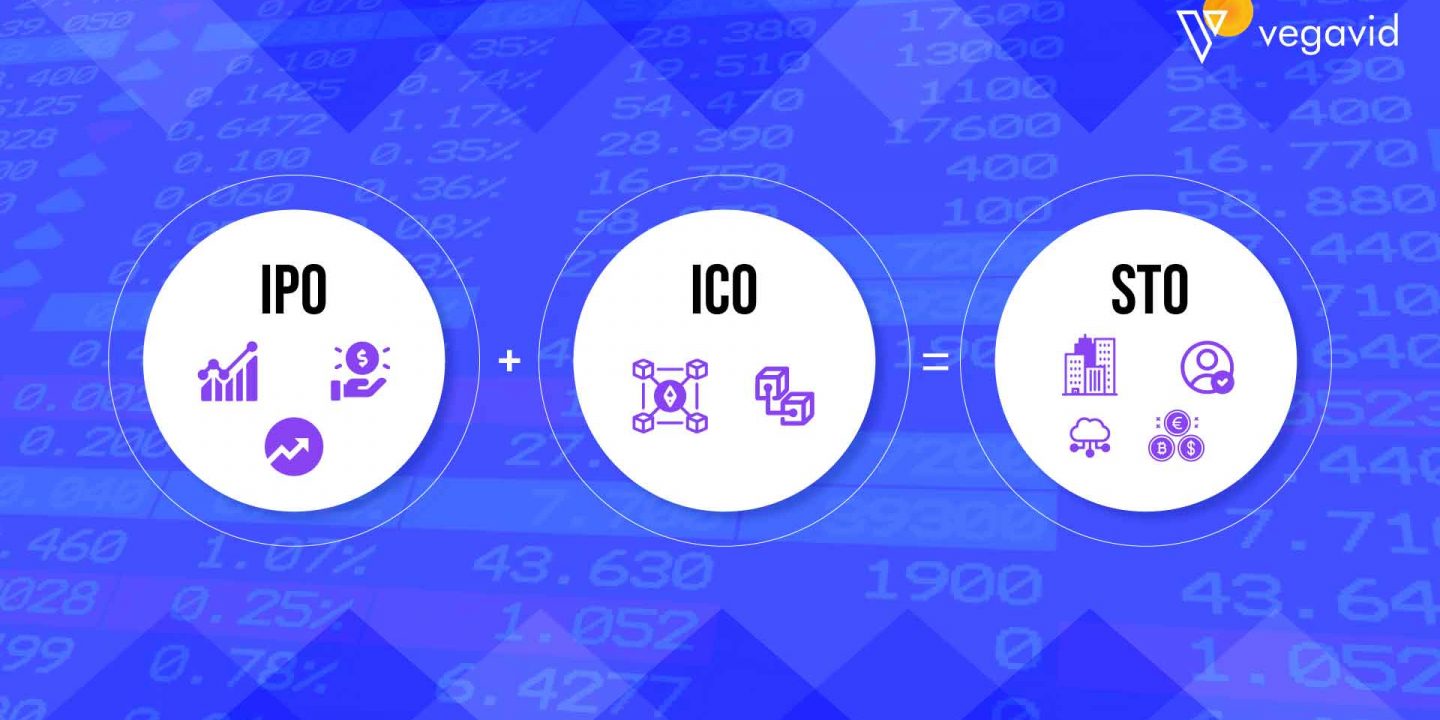
In recent years, the financial landscape has seen the emergence of new fundraising methods that differ significantly from the traditional Initial Public Offering (IPO) model. Initial Coin Offerings (ICOs) and Security Token Offerings (STOs) have gained traction in the digital age as a way for companies to raise capital and provide investors with alternative investment opportunities. But how do these methods differ from each other and the traditional IPO model? In this article, we will explore the key differences between IPO, ICO, and STO and provide insights into which type of offers may best suit your business needs.
Introduction to Fundraising
Fundraising is raising capital for a business venture, project or idea. It is a crucial step for any business looking to expand its operations, develop new products or services, or simply maintain its existing operations. Various fundraising methods are available to businesses, and each comes with its own advantages and disadvantages. Three popular methods of fundraising are Initial Public Offering (IPO), Initial Coin Offering (ICO), and Security Token Offering (STO).
Each fundraising method has its own benefits and drawbacks, and businesses must consider factors such as regulation, investor accessibility, and associated risks before deciding which method to pursue. In the following sections, we will explore the differences between IPOs, ICOs, and STOs and help you decide which fundraising method is best for your business.
IPO (Initial Public Offering)
An Initial Public Offering (IPO) is a traditional method of raising capital in which a private company offers its shares to the public for the first time. The company must comply with regulatory requirements in an IPO and provide detailed financial and business information to potential investors. Once the shares are publicly traded, the company becomes accountable to its shareholders and is subject to greater public scrutiny. IPOs are typically used by established companies seeking to raise significant amounts of capital for growth and expansion.
Advantages:
Greater access to capital: IPOs can raise large amounts of capital, enabling companies to finance growth, acquisitions, and other strategic initiatives.
Increased visibility: Going public can enhance a company’s visibility and credibility, which can help attract customers, partners, and employees.
Liquidity for shareholders: An IPO provides liquidity to existing shareholders, who can sell their shares on public markets.
Disadvantages:
High costs: IPOs are expensive and time-consuming, requiring extensive legal, accounting, and regulatory work.
Increased regulatory burden: Public companies are subject to strict reporting and disclosure requirements, which can be costly and time-consuming.
Loss of control: Going public can dilute the ownership and control of founders and management, making it more challenging to implement strategic decisions.
ICO (Initial Coin Offering)
An Initial Coin Offering (ICO) is a method of fundraising that uses cryptocurrency as a means of investment. In an ICO, a company creates and issues its own cryptocurrency tokens, which investors can purchase using other cryptocurrencies, such as Bitcoin or Ethereum. Unlike an IPO, an ICO does not require compliance with traditional regulatory frameworks, which has led to controversy and increased scrutiny by governments worldwide. ICOs are typically used by startups seeking to raise capital to develop a new product or service, particularly in the technology industry.
Advantages:
Access to capital: ICOs can raise capital quickly and efficiently without intermediaries or traditional financial institutions.
Global reach: ICOs can attract investors worldwide, providing greater access to capital and a more extensive customer base.
Flexibility: ICOs offer flexibility in terms of fundraising structure and investor participation.
Disadvantages:
Regulatory uncertainty: ICOs are largely unregulated, leading to fraud and investor protection concerns.
Volatility: The value of ICO tokens can be highly volatile, resulting in significant investor losses.
Lack of transparency: ICOs may lack transparency and disclosure, making it difficult for investors to make informed decisions.
STO (Security Token Offering)
A Security Token Offering (STO) is a fundraising method that combines the traditional features of an IPO with the use of blockchain technology and cryptocurrency. In an STO, investors purchase digital tokens representing company securities, such as shares or bonds. These tokens are backed by tangible assets, such as property or revenue streams, which makes them more secure and regulated than ICOs. STOs are subject to regulatory oversight, which provides greater transparency and investor protection. STOs are typically used by established companies seeking to raise capital more flexibly and cost-effectively than traditional IPOs.
Advantages:
Regulatory compliance: STOs are subject to regulatory oversight, providing greater transparency and investor protection.
Asset-backed: STOs are backed by tangible assets, such as property or revenue streams, which makes them more secure and less volatile than ICOs.
Flexibility: STOs offer flexibility in terms of fundraising structure and investor participation.
Disadvantages:
High costs: STOs can be expensive and time-consuming, requiring extensive legal, accounting, and regulatory work.
Limited investor pool: STOs may require investors to meet specific qualifications, limiting the pool of potential investors.
Limited liquidity: STO tokens may be less liquid than publicly traded securities, making it more difficult for investors to sell their holdings.
ICO vs IPO vs STO
Initial Public Offering (IPO), Initial Coin Offering (ICO), and Security Token Offering (STO) are all methods of raising capital, but they have significant differences. Here are some key differences between the three:
| IPO | ICO | STO |
| IPOs are used by companies to sell shares of their company to the public in exchange for capital. | ICOs are used by startups to raise funds by issuing new digital tokens to investors in exchange for cryptocurrency. | STOs are used to sell digital tokens to investors, similar to ICOs, but with an important distinction: STOs are backed by tangible assets, such as stocks or real estate. |
| IPOs require extensive legal and financial regulatory compliance. They are heavily regulated by government agencies such as the Securities and Exchange Commission (SEC). | ICOs are not regulated by government agencies, but companies must still comply with anti-fraud laws. | STOs are regulated by government agencies, including the SEC, and must comply with securities laws. |
| IPOs are typically available only to accredited investors and institutional investors. | ICOs are open to anyone who has cryptocurrency to invest in, including retail investors. | STOs are generally only available to accredited investors. |
| IPOs are generally associated with well-established companies seeking to expand their operations. | ICOs can be risky, as many ICO projects have failed or turned out to be fraudulent.They are typically associated with blockchain and cryptocurrency-based startups. | STOs are considered more secure and stable than ICOs because tangible assets back them.STOs are becoming more popular for companies to raise funds while complying with securities laws. |
Factors to consider when deciding between an IPO, ICO, or STO
Here are some factors to consider when deciding between an IPO, ICO, or STO:
Regulatory environment: The level of regulatory oversight can vary widely between IPOs, ICOs, and STOs. Companies should consider the regulatory environment and compliance requirements before choosing a fundraising method.
Investor base: Each type of offering attracts a different type of investor. Companies should consider the characteristics of their target investor base, such as their risk tolerance, investment horizon, and geographic location.
Fundraising goals: The amount of capital needed and the timing of the fundraising can influence the choice of fundraising method. For example, IPOs may be more appropriate for larger, more established companies that require significant amounts of capital, while ICOs may be more appropriate for smaller, early-stage companies.
Company structure: The ownership structure and management team can also impact the choice of fundraising method. For example, if the founders and management team want to maintain control of the company, they may prefer an STO over an IPO.
Token characteristics: If a company chooses to raise capital through an ICO or STO, it must carefully consider the characteristics of the tokens being issued, such as the token’s utility, value, and liquidity.
Costs and timing: The cost of ICO vs IPO vs STO can vary significantly. Companies should consider legal, accounting, and regulatory costs and the time required to complete the offering.
Market conditions: Finally, market conditions can also impact the choice of fundraising method. For example, if public markets perform well, an IPO may be more attractive, while an ICO may be less attractive if the cryptocurrency market is experiencing a downturn.
Conclusion
IPOs, ICOs, and STOs are all viable options for raising capital, but each has unique advantages and disadvantages. Companies should carefully consider their specific needs and goals and the regulatory and compliance requirements associated with each type of offer before deciding. By avoiding common mistakes such as neglecting investor relations or underestimating compliance requirements, companies can increase their chances of a successful fundraising campaign and build long-term relationships with investors. Ultimately, the decision between an IPO, ICO, or STO will depend on various factors, and companies should consult with experienced professionals to guide them through the process.











